The a7R has no anti-aliasing (AA) filter. The a7 has one that’s pretty weak, and mostly operates in one direction. With its big fat pixels, the a7S would seem to be prone to aliasing. What did Sony do about that when they designed the camera?
I set out to learn.
I put the sharpest lens I’ve got, the Zeiss 55mm f/1.4 Otus, If any lens can cause aliasing, this one will. I set up the ISO 12233 target and put the camera on a tripod so that the target’s vertical extent was 473 pixels — more on that later. I put a PC connector adapter in the hot shoe and connected a synch cord between that and a Paul Buff Einstein electronic flash. I set the color mode to 5500 K, and the output to 1 watt-second, giving me a flash duration of a bit more than 1/10,000 second.
I set the camera to mechanical shutter, single shot, self timer, and EFCS. ISO was 100. Shutter speed was 1/250. I made exposures at f/8, f/11. and f/16. I would have liked to use f/5.6, which is a sharper aperture on this lens, but the light was too bright. No matter; with these big pixels, I saw aliasing and false color even at f/16.
Here’s the whole image, at f/8:
And just the target area:
Now let’s look closely at some features. The cross at the upper right is instructive:
You can see that we get resolution, albeit at low contrast, until the place marked “7”. That means 700 lines per target height. Since the target is 473 pixels high, the point marked 7 is 700/473 = 1,47 lines/pixel; that’s above the Nyquist frequency, so the AA filter on the a7S isn’t super-strong.
You will also note that the vertical and the horizontal resolution are the same. Apparently the a7S’s AA filter operates equally in both directions, unlike the one in the a7.
Note the spreading of the lines between the ends of the crosses and “6”. That’s aliasing; they should be converging. This is to be expected above the Nyquist frequency, which occurs near the points marked “5”.
You can also see some false color artifacts at 500 lines per target height. Those are actually fairly mild considering how fat the a7S’s pixels are.
The central area of the ISO 12233 target is prone to generating false color:
In this case, there’s not much of it.
There’a a strip across the bottom that often trips up Bayer sensors:
The a7S is not immune,
All in all, I consider the a7S AA filter a good compromise.
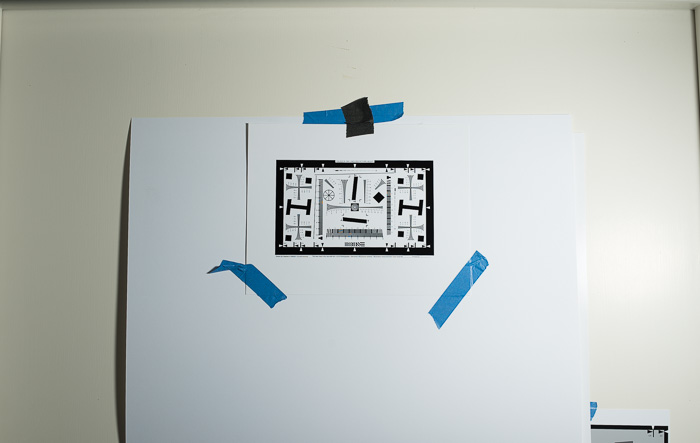
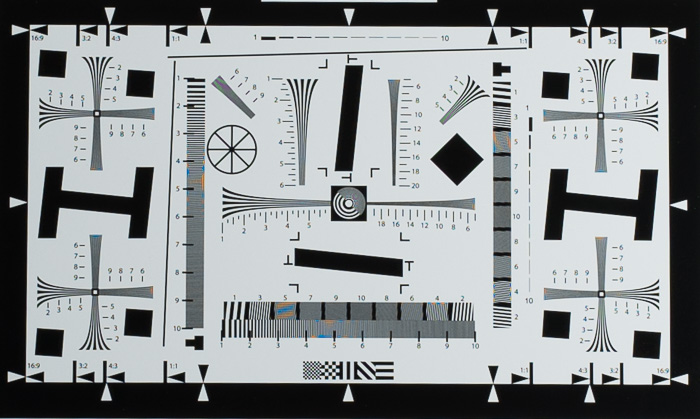
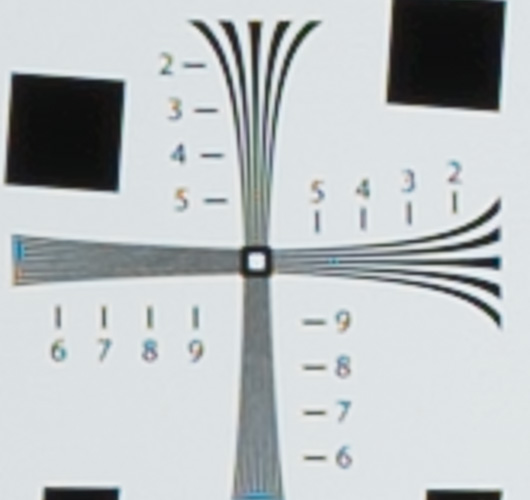
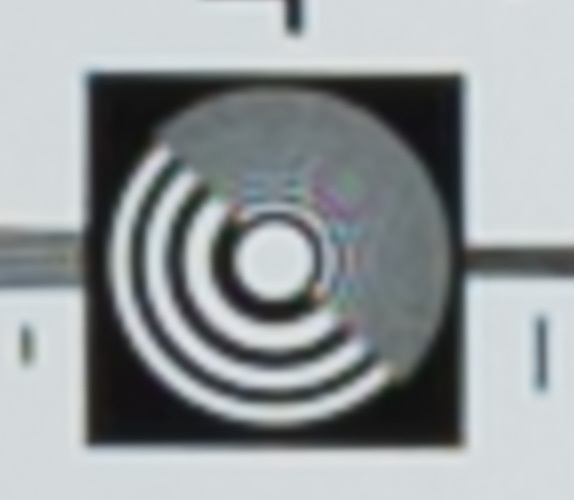
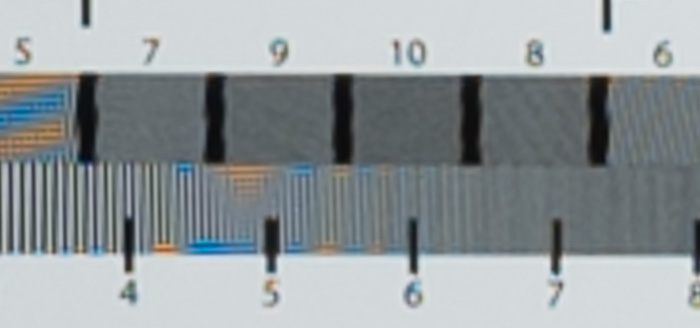
Leave a Reply